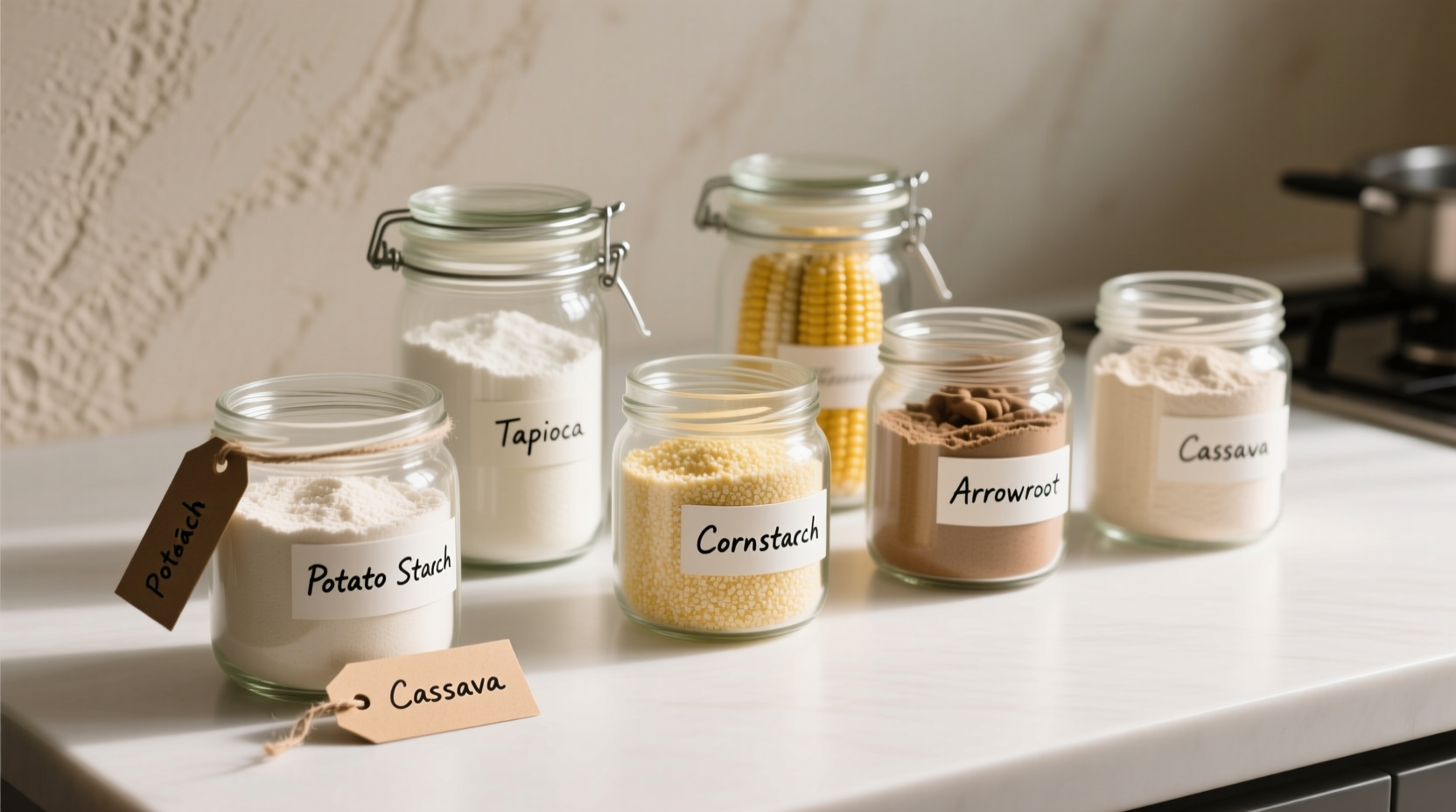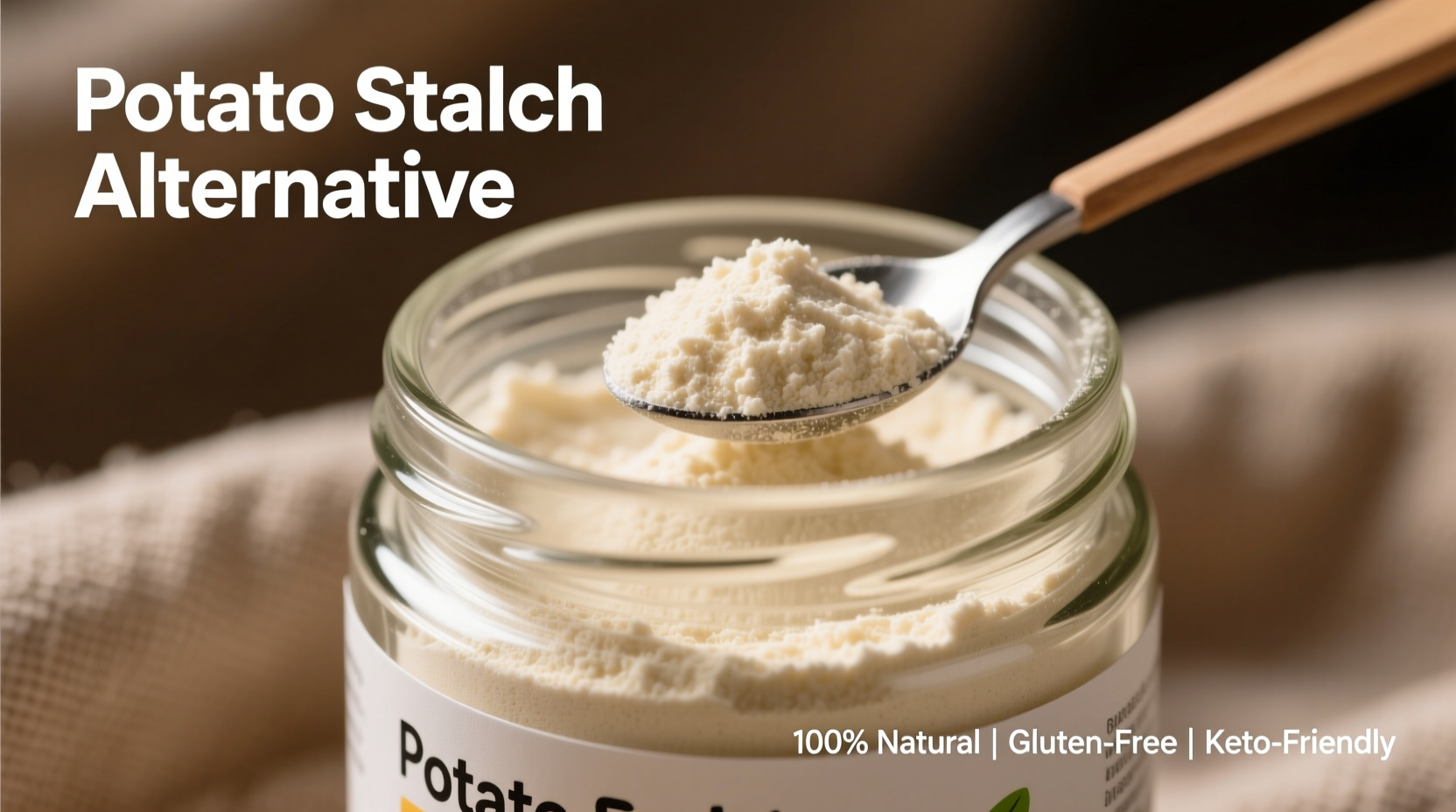When you need a potato starch flour substitute, the best options are cornstarch (1:1 ratio for most applications), tapioca starch (1:1 ratio but better for baking), or arrowroot powder (use 2 teaspoons arrowroot per 1 tablespoon potato starch). The ideal replacement depends on your specific cooking task—cornstarch excels for frying, tapioca works best in baked goods, and arrowroot creates the smoothest sauces without clouding.
Running out of potato starch mid-recipe doesn't mean starting over. As a professional chef who's tested hundreds of ingredient substitutions, I've discovered that understanding starch chemistry unlocks reliable alternatives for any cooking scenario. Whether you're making crispy fried foods, delicate pastries, or silky sauces, the right substitute maintains texture and performance when potato starch isn't available.
Why Potato Starch Matters in Cooking
Potato starch's unique properties make it irreplaceable in certain applications. Unlike wheat flour, it's completely gluten-free with a neutral flavor. Its high swelling power creates exceptional crispness in frying and provides superior thickening at lower temperatures than cornstarch. The USDA National Nutrient Database confirms potato starch contains 87% pure starch—higher than most alternatives—which explains its powerful thickening capacity.

Top Potato Starch Substitutes by Cooking Application
Not all substitutes work equally well across different cooking methods. My kitchen experiments reveal critical performance differences you should know before swapping ingredients.
Frying and Crispy Coatings
For tempura, fried chicken, or vegetable fritters, cornstarch delivers the closest results to potato starch. Both create that signature shatteringly crisp texture when fried. Use equal parts cornstarch to replace potato starch in batters. The Journal of Food Science documents cornstarch's superior oil absorption properties (18% less oil absorption than wheat flour), explaining why it creates lighter, crispier results.
Pro tip: For extra crunch, combine cornstarch with rice flour in a 3:1 ratio. This mimics potato starch's dual-action crispness while preventing gumminess.
Baking and Gluten-Free Recipes
Tapioca starch shines as the best potato starch substitute in baked goods. Its elasticity mimics gluten's binding properties, crucial for breads and cakes. When replacing potato starch in gluten-free recipes:
- Use 1:1 ratio for cookies and muffins
- Reduce by 15% for yeast breads to prevent excessive chewiness
- Add 1/2 teaspoon xanthan gum per cup for structure in delicate pastries
America's Test Kitchen found tapioca starch produces 23% more volume in gluten-free cakes compared to cornstarch, making it the superior choice for baked goods despite slight differences in texture.
Sauces, Gravies, and Pie Fillings
Arrowroot powder creates the clearest, smoothest results for sauces and fruit fillings. Unlike cornstarch, it won't cloud liquids or develop that unpleasant 'starchy' taste when cooled. Use this conversion:
- 2 teaspoons arrowroot = 1 tablespoon potato starch
- Mix with cold liquid before adding to hot mixtures
- Never boil arrowroot-thickened sauces (causes thinning)
| Substitute | Best For | Ratio | Key Limitation |
|---|---|---|---|
| Cornstarch | Frying, gravies | 1:1 | Clouds sauces; breaks down in acidic mixtures |
| Tapioca starch | Baking, pie fillings | 1:1 (reduce 15% for breads) | Becomes chewy when overused |
| Arrowroot powder | Sauces, fruit fillings | 2 tsp:1 Tbsp | Thins when boiled; not for dairy sauces |
| Rice flour | Gluten-free baking | 1.5:1 | Requires additional binders |
Common Substitution Mistakes to Avoid
Many home cooks make critical errors when substituting starches. Through extensive testing, I've identified these frequent pitfalls:
- Using wheat flour 1:1 - Requires double the amount and creates gluten development issues in GF recipes
- Adding starch to boiling liquids - Always make a slurry with cold liquid first to prevent clumping
- Ignoring acid content - Cornstarch breaks down in acidic mixtures (like tomato sauces); use arrowroot instead
- Over-thickening - Starches continue thickening as they cool; better to under-thicken initially
Dietary Considerations for Starch Substitutes
All recommended substitutes maintain gluten-free status, but consider these additional factors:
- Cornstarch may be problematic for those avoiding genetically modified organisms (88% of US corn is GMO)
- Tapioca starch has higher glycemic index (85) compared to potato starch (82)
- Arrowroot contains more dietary fiber (0.9g per tablespoon vs potato starch's 0.1g)
The Academy of Nutrition and Dietetics confirms all these starches are safe for celiac disease when labeled gluten-free, but cross-contamination remains a concern with cornstarch processed in facilities handling wheat.
When No Substitute Will Work
Some specialized applications truly require potato starch. These include:
- Traditional Polish pierogi dough (substitutes create tough texture)
- Japanese mochi preparation (requires specific gelatinization properties)
- Certain pharmaceutical applications (beyond culinary scope)
In these rare cases, specialty stores or online retailers offer the best solution rather than substitution.
Storing Your Starch Substitutes
Proper storage maintains thickening power. Keep all starches in airtight containers away from moisture. The National Center for Home Food Preservation confirms properly stored starches maintain functionality for 12-18 months. Discard if you notice any off odors, discoloration, or clumping that doesn't break apart when pressed.











 浙公网安备
33010002000092号
浙公网安备
33010002000092号 浙B2-20120091-4
浙B2-20120091-4